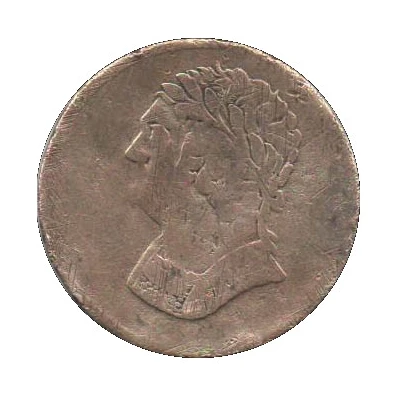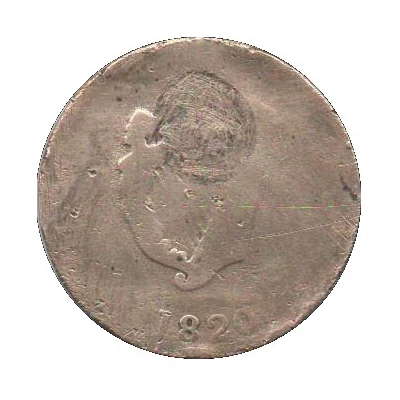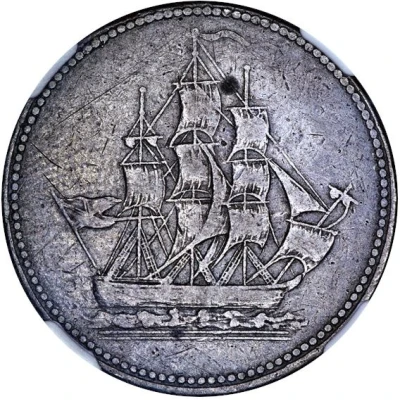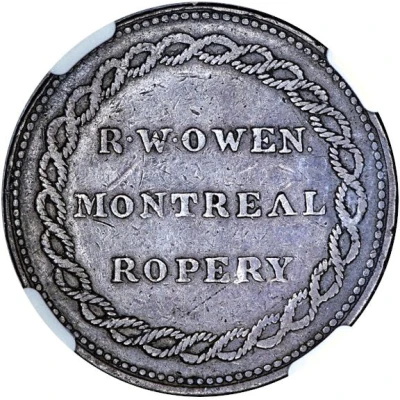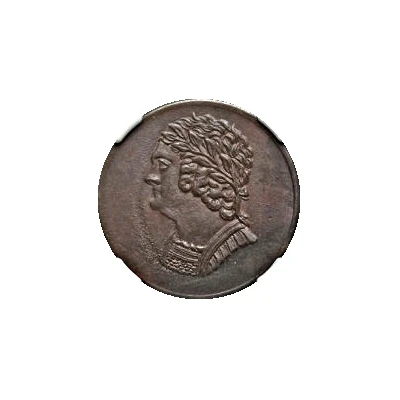
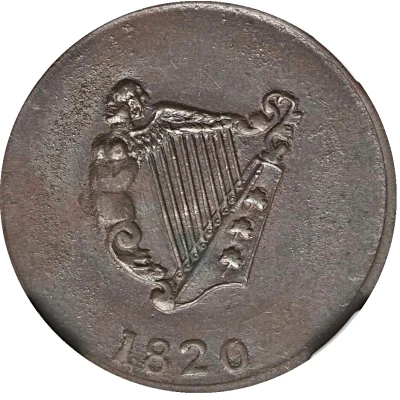

© Heritage Auctions
½ Penny Imitation Bust and Harp
1820 (1820-1837) years| Brass | 5.7 g | 27.3 mm |
| Issuer | Lower Canada (Canadian provinces) |
|---|---|
| Type | Token |
| Year | 1820 (1820-1837) |
| Value | ½ Penny (1⁄480) |
| Currency | Pound |
| Composition | Brass |
| Weight | 5.7 g |
| Diameter | 27.3 mm |
| Shape | Round |
| Orientation | Coin alignment ↑↓ |
| Demonetized | Yes |
| Updated | 2024-10-04 |
| Numista | N#2539 |
|---|---|
| Rarity index | 52% |
Reverse
A harp incorporating the body of a winged female facing left, date below.
Script: Latin
Lettering: 1820
Edge
Plain
Comment
Weight: 4.7 - 6.0 gDiameter: 27.3 - 28.0 mm
LC-60C1 Date 1820, 10 strings on harp, Copper or brass
LC-60C2 Date 1820, 9 strings on harp, Copper or brass
LC-60C3 Date 1820, 8 strings on harp, Copper or brass
Weight: 5.0 - 5.5g
Diameter: 27.4 - 27.8mm
LC-60D1 Date 1820, 10 strings on harp, Copper
LC-60D2 Date 1820, 10 strings on harp, Brass
LC-60D3 Date 1820, 9 strings on harp, Brass
Weight: 4.2 - 5.2g
Diameter: 27.5 - 27.8mm
LC-60E1 Date 1820, 10 strings on harp, Brass
LC-60E2 Date 1820, 9 strings on harp, Brass
LC-60E3 Date 1820, 9 strings on harp, Copper
LC-60E4 Date 1820,8 flaps on cuirass, 9 strings on harp, Brass
Weight: 5.2 - 5.3g
Diameter: 27.5 - 27.8mm
LC-60F1 Date 1820, 10 strings on harp, Brass
LC-60F2 Date 1820, 10 strings on harp, Copper
The brass imitations are all dated 1820 and vary widely in workmanship. Following McLachlan's example, the are divided into four groups; best to worst workmanship.
Throughout this series, obverse variations exist in the size and number of ruffles under the portrait's chin and the number of flaps in the cuirass. Reverse variations include style of female's hair and in the top, foot, and placement of leaves of the harp.
Interesting fact
One interesting fact about the Token ½ Penny (Imitation Bust and Harp) 1820 (1820-1837) from Lower Canada (Canadian provinces) made of Brass weighing 5.7 g is that it was used as a substitute for the official British halfpenny coin, which was in short supply in the early 19th century. The Token ½ Penny was issued by private companies and individuals in Lower Canada (now Quebec) and was accepted as legal tender in the province. Despite being made of brass, which is a less valuable metal than the copper used in the official halfpenny coin, the Token ½ Penny was still widely accepted and used in everyday transactions. This fact highlights the resourcefulness and adaptability of the people of Lower Canada in the face of economic challenges.
Price
| Date | Mintage | VG | F | VF | XF | AU | UNC |
|---|---|---|---|---|---|---|---|
| 1820 | - | - | - | - | - | - |
Values in the table are based on evaluations by sales realized on Internet platforms. They serve as an indication only for ½ Penny (Imitation Bust and Harp) 1820 (1820-1837) coin.
